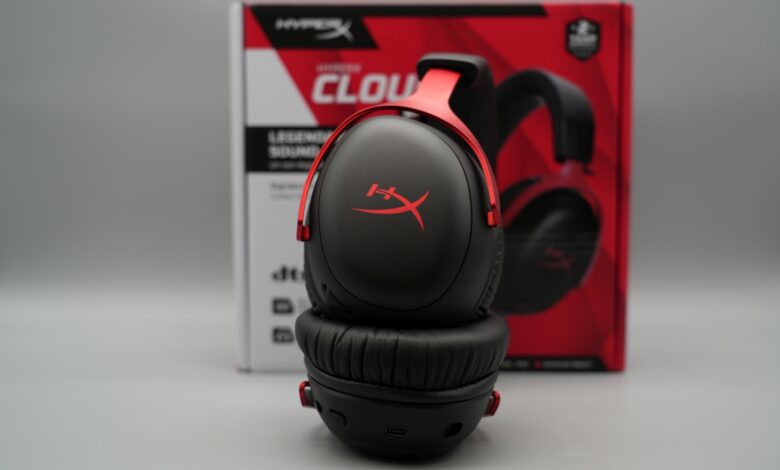
The gaming headsets of the HyperX brand, which belongs to HP, have made a name for themselves in the scene over the years. The wireless Cloud models have a long battery life (from up to 300 hours in the case of the Cloud Alpha Wireless), a convincing sound and a good price-performance ratio. The new wireless edition of the Cloud III, which we already tested at the end of June, is supposed to combine all of this. Our HyperX Cloud III Wireless review clarifies whether this was successful and where the strengths and weaknesses lie.
Technical specifications
| Type | Closed headphones, circumaural |
| Connectors | USB-C |
| Driver | 53 mm, neodymium, dynamic |
| Microphone | 10 mm electrolytic condenser microphone |
| Frequency response | 10 Hz – 21 kHz |
| Impedance | 64 Ohm |
| Connection | 2.4 GHz radio |
| Range (Wireless) | around 12 meters |
| Battery life | 120 hours |
| Weight | 342g (headset and microphone) |
| Compatibility | PC, PS5, PS4, Nintendo Switch |
| Price | € 144.99 * |
HyperX Cloud III Wireless review: design and workmanship
- Stylish black and red design
- Rugged construction
- Impeccable workmanship
For the HyperX Cloud III Wireless, the manufacturer falls back on the familiar design in the test, which already distinguishes the wired model, as well as most other HyperX headsets. The wireless model has a simple, black design with a red manufacturer logo on the ear cups and the typical red metal earpieces.
Visually, the Wireless is almost completely similar to the Cloud III. Except for the connection cable, of course, which is logically absent here and replaced by a USB-C port and the power button with status LED above it.
Of course, design is always a matter of taste, but in my opinion, the HyperX Cloud III Wireless looks good. The headset scores with a pleasantly grippy design, which, in conjunction with the anodized finish, makes for a pleasant feel.
The red, very sturdy metal brackets feel very high-quality and wait with a pleasant grid. We look for gaps or inconsistencies in vain. Thus, the build quality is once again on an excellent level.
In addition to the headset (and separate microphone boom), a short USB-C to USB-C charging cable and a cloth carrying bag are included. The manufacturer HyperX includes a 2.4 GHz wireless dongle for the connection. This relies on the modern USB-C port, but also has an included USB-A adapter – very commendable.

HyperX Cloud III Wireless in review: the wearing comfort
- Soft, large ear cushions
- Very high wearing comfort
The HyperX Cloud III Wireless can also score points in the test in terms of wearing comfort, which is right up there with the best gaming headsets. There are a few reasons for this. For example, the generously sized and soft memory foam including the synthetic leather cover of the ear cups. This is pleasantly generous with a thickness of 25 mm.
The inner dimensions of approximately 70 mm x 50 mm (height x width) also offer enough space for larger ears. The Corsair HS80 Max (our review), one of the most comfortable (and best) wireless headsets, on the head, for example, comes in at “only” 65 mm x 45 mm.

On the other hand, the size can be adjusted very well to one’s own head thanks to eight levels or 3.5 centimeters. In combination with the fairly low weight of 331 grams without or 342 grams with microphone, a coherent overall picture emerges here.
Operation and practical test
- Operation directly on the headset
- Connection only via 2.4 GHz radio
- Spatial audio support (PC only)
Of course, the HyperX Cloud III Wireless connects wirelessly in the 2.4 GHz wireless standard, because: a Bluetooth function is unfortunately not offered. That is a bit of a shame in view of the price.
Thus, mobile devices are of course largely left out, but in terms of connectivity, a connection to PC, Nintendo Switch and PlayStation consoles is possible without any problems thanks to the USB receiver. However, DTS Headphone:X including Spatial Audio is exclusively available on the PC.
The operating concept seems well thought-out and works pleasantly precise. The Cloud III Wireless is turned on and off via a button on the back of the left ear cups, while the microphone can be muted with the small button above it. The latter is indicated by a red LED directly on the microphone arm.
A knurled and pleasantly grippy rotary dial on the right ear cup is used to fine-tune the volume, but its ratcheting could have been a bit more noticeable.
Thus, the wireless gaming headset is quickly ready for use on all platforms. On the PC, HyperX’s NGENUITY app allows for many more fine adjustments, but more on that later.
Battery Life of the Cloud III Wireless
- Up to 120 hours of battery life
- USB-C charging port
- No wired use possible
The parade discipline of wireless headsets from the house of HyperX has always been, among other things, the battery life. Fortunately, this also applies to the HyperX Cloud III Wireless. The manufacturer promises up to 120 hours of use, which we can actually confirm in the practical test.
This runtime is actually achieved at around 60% of the maximum volume. The stamina naturally decreases a bit at higher rates, but it is still above most competitors.
Charging is done via USB-C, but the charging cable could have been a bit longer. Wired use is unfortunately not possible, but there is a convincing wireless range, thanks to which you can go to the fridge or the toilet without the connection breaking.
Playback and recording quality
- Convincing sound with focus on treble and bass
- Good three-dimensionality; but somewhat narrow soundstage
- Fine tuning of the equalizer via app
Nothing has changed in the acoustics of the HyperX Cloud III Wireless compared to the wired variant. Thus, the wireless gaming headset relies on angled dynamic drivers with a stately size of 53 millimeters, which cover a frequency of 10 hertz to 21,000 hertz at an impedance of 64 ohms.
Thus, the headset scores with a full-bodied sound and a very balanced sound image that slightly puts the trebles in the foreground and thus slightly emphasizes important sound cues in games like steps in shooters or similar.
The mids are somewhat in the background for this, while the bass has again been boosted to emphasize powerful effects like explosions or the like. A mix that can unfold its full potential especially in games and where even the smallest details are accentuated very well.
The stereo sound’s three-dimensionality is quite good, which makes the direction of the sounds well recognizable, even though the sound seems a bit narrow and lacks a bit of airiness, especially towards the top.
When listening to music, however, the mix is only partially pleasing because the mids, which are responsible for voices and instrumentation, audibly lag behind the basses and trebles. Fortunately, this can be remedied with the help of the companion app for the PC, which provides six equalizer presets and also allows custom adjustments. This improves the sound image significantly, especially in music and movies or series.
Exclusively on the PC, the headset also offers virtual DTS Headphone: X surround sound including Spatial Audio. In games, this noticeably improves the spatial localization of sound cues, although in my eyes fine details fade somewhat into the background and the level of detail of footsteps or other high-pitched noises drops a bit. Moreover, the virtual surround sound is not suitable for music.
Microphone Quality of the HyperX Cloud III Wireless
- Very good microphone quality (for a wireless headset)
- Too low maximum volume
Also inherited from the wired variant, the wireless model has the unidirectional, 10 mm electrolytic condenser microphone, which fits on a flexible and 10 centimeter long arm.
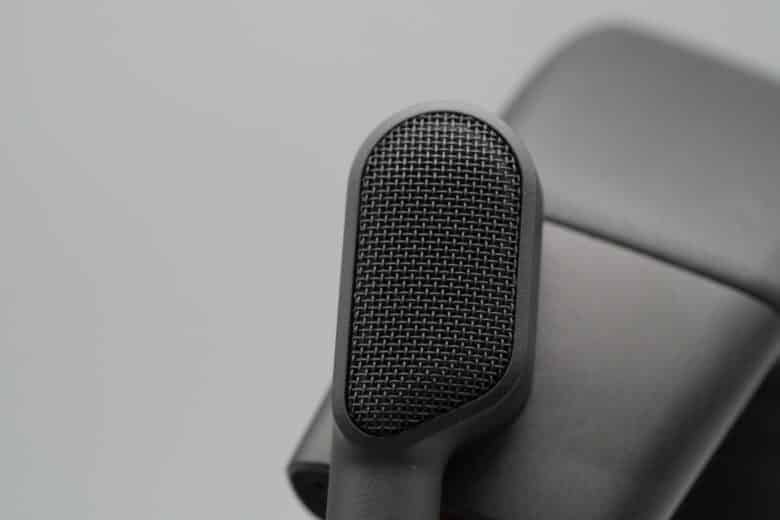
The first thing that catches the eye is the very good recording quality for a wireless gaming headset. The user’s own voice is transmitted full, detailed and with a convincing dynamic range. However, the microphone reveals some minor weaknesses in sharp sibilants, which are only noticeable when the microphone is very close to the mouth.
However, this is also the problem: This is actually always the case, because the maximum volume or gain is quite low. Even when we turn the volume up to the maximum within the companion app and the sound settings of Windows, it does not reach the same level as most rivals.
This is also shown in the following video, in which we subjected the microphone to an unprocessed sound test.
App connectivity: HyperX NGENUITY
- Overwhelming interface
- Very limited settings
The companion app for the headset is HyperX’s own solution, NGENUITY, which can be obtained from the Microsoft Store. This first greets us with a firmware update for the Cloud III Wireless, which is quickly installed.
The app itself has a very simple structure and is also clearly behind the solutions of other manufacturers in terms of the feature set. On the main page, it is possible to adjust the volume of the headset and microphone, as well as make your own voice audible via mic monitoring.
Here we also add Spatial Audio and choose between one of the equalizer presets. By pressing “New Preset”, we can also cobble together our own sound image with the help of a 10-band equalizer. Otherwise, that’s about it in terms of the app’s functions.
HyperX Cloud III Wireless review: Conclusion
The HyperX Cloud III Wireless is in no way inferior to the wired variant in the test. The gaming headset impresses with its elegant design, convincing build quality and excellent wearing comfort.
The Cloud III Wireless also has a lot to offer in terms of sound, even though the factory mix is only suitable for listening to music to a limited extent – it is good that you can do it yourself, even if unfortunately only on the PC. The manufacturer combines all this with an excellent battery life. So everything great? Not quite.
The low maximum volume of the microphone and the lack of Bluetooth connectivity are points of criticism. The virtual surround sound, which is also only available on the PC, is also not completely convincing.
This weighs most heavily in view of the competition. For an MSRP of around 180 Euros, the HyperX headset has a lot to offer, but similar wireless gaming headsets from other manufacturers are much more broadly positioned in this price segment – be it through more settings, more options in terms of connectivity or a better sound.
However, if a wireless connection is enough for you, the HyperX Cloud III Wireless is still an excellent wireless gaming headset with a sleek and robust design, good sound, and excellent battery life that is definitely worth a look.
HyperX Cloud III Wireless
Workmanship
Comfort
Sound quality
Recording quality
Features
Value for money
90/100
The Cloud III Wireless is characterized by its elegant design, high-quality build, impeccable wearing comfort, and long battery life. However, the competition offers more for the money in terms of connectivity and microphone volume.



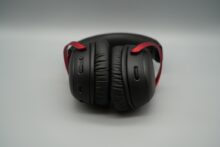
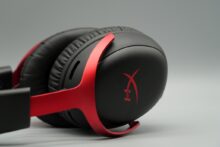
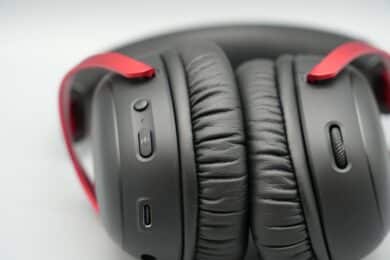

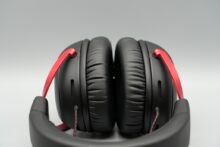

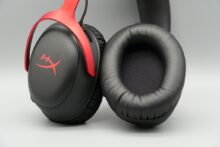


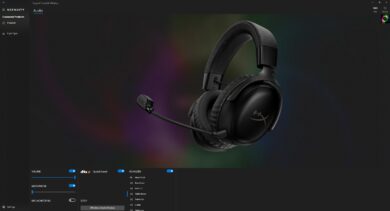
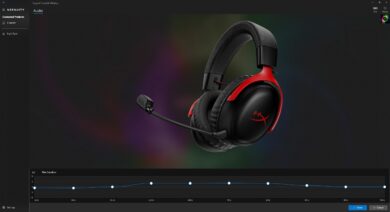


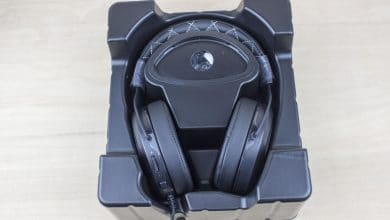
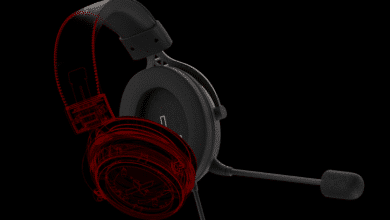

No replies yet
Neue Antworten laden...
Gehört zum Inventar
Beteilige dich an der Diskussion in der Basic Tutorials Community →